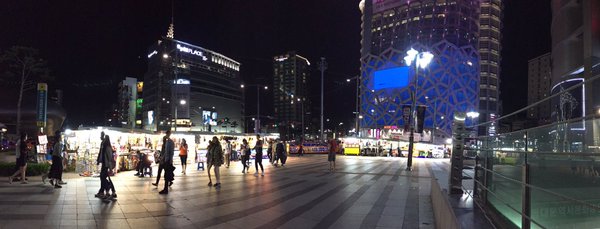
This is the seventh part of a series following an MPA study trip to Seoul, South Korea.
Part I: Studying in Seoul with Trevor Minyard
Part III: To Live and Work for the Benefit of All Mankind
Part IV: Seoul’s Lump Sum Rental Structure
Part V: Local Government Innovation in Seoul
Part VI: The Divide Between North and South Korea
Part VII: The Internet of Things, Seoul Style

By Trevor Minyard – LinkedIn and Twitter
Hello again my friends! We have reached the end of our study, and were fortunate enough to finish on a high note; Seoul’s take on the “Internet of Things.” The Seoul Metropolitan Government is highly involved in advancing information technology infrastructure, and their e-government initiatives are some of the most impressive across the planet. In today’s post we’ll be focusing on a field visit that our case study group took to learn about on the street ways (literally) Seoul is fostering efficiency and public service through technology.
Specifically, I was able to see three areas in which Seoul is using technology to make the lives of their citizens easier, cleaner, and more productive. These projects and/or initiatives are described below:
Smart Parking
Seoul has implemented smart parking meters that connect to a mobile application free to download on various app stores. These meters are equipped with CCTV cameras that monitor open and occupied spaces in an area, then push that data to the application. From there, citizens can reserve spots digitally, if they are en-route to a popular area, and the meters will show as occupied. Finally, these meters can also be incorporated into the great transportation technology center that we spoke about in part V.
Electronic Waste
 In addition to transportation improvements, Seoul is working to make all aspects of public service more efficient. This is evidenced by the government’s efforts in placing capacity sensors on public garbage and recycling cans. Throughout the city, you will find waste receptacles that are outfitted with infrared sensors measure the “fill rate” of the cans. Once a given can is at 80%, the sensors dispatch a garbage collection command to the appropriate staff and the waste is collected as it reaches its capacity. This is a beta program, and it is expected to be fully implemented by the beginning of 2018.
In addition to transportation improvements, Seoul is working to make all aspects of public service more efficient. This is evidenced by the government’s efforts in placing capacity sensors on public garbage and recycling cans. Throughout the city, you will find waste receptacles that are outfitted with infrared sensors measure the “fill rate” of the cans. Once a given can is at 80%, the sensors dispatch a garbage collection command to the appropriate staff and the waste is collected as it reaches its capacity. This is a beta program, and it is expected to be fully implemented by the beginning of 2018.
Free Wi-Fi (Yes, I said FREE)
The subtitle says it all; throughout the city of Seoul citizens and tourists have access to free, fast, and reliable Wi-Fi. Routers such as the one shown below are outfitted on telephone poles, traffic lights, and even on foul poles at baseball stadiums. This effort to provide free Wi-Fi to all citizens in all places across Seoul is central to the needs of modern day residents. Almost 80% of Seoul residents have are smartphone owners, and broadband internet in the home is not nearly as prevalent as it is in America. This means that Seoulites are primarily using their phones to access the internet. The Seoul Metropolitan Government has a bold (yet achievable in my opinion) goal of having free Wi-Fi available city wide by January 2017.
Thanks for keeping up with my trip to Seoul through this point, and I hope that you’ve been able to glean a bit of inspiration from the series. Tomorrow will be the last entry, celebrating our groups’ efforts throughout the week, as well as giving thanks to all the appropriate parties. If you’d like to see more content from Seoul, check out my posts on Twitter (@trevorminyard). I’d love to hear from you if you have any comments or questions!
